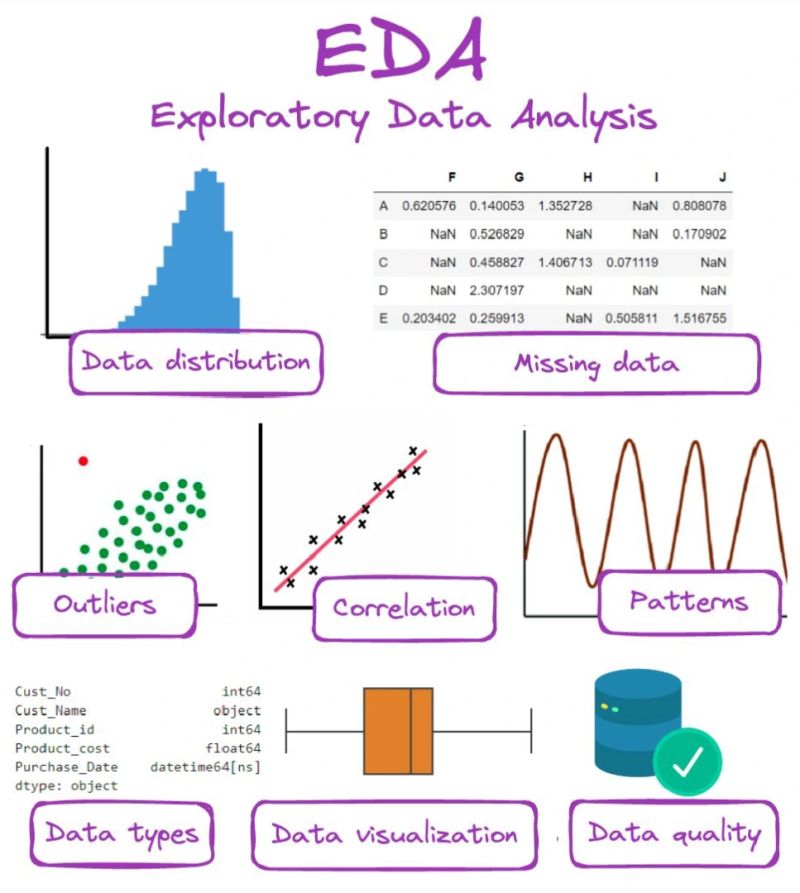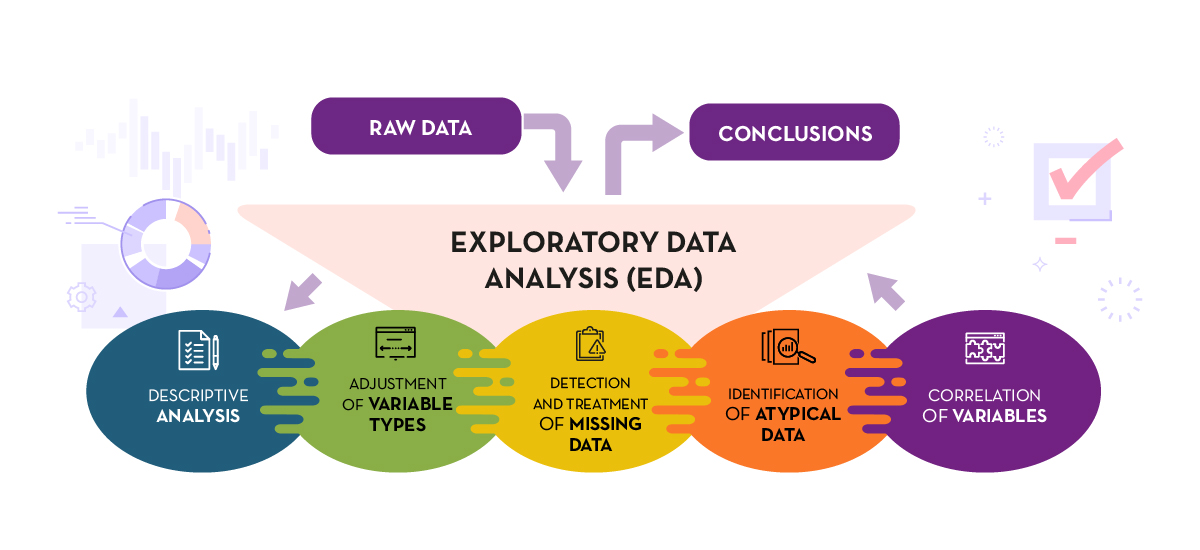Exploratory Data Analysis (EDA): Unveiling Insights in the Data Landscape
Exploratory Data Analysis (EDA): Unveiling Insights in the Data Landscape
Introduction: Exploratory Data Analysis (EDA) is the preliminary step in the data analysis process, where analysts dive into the data to understand its characteristics, patterns, and relationships. It is a crucial phase that lays the foundation for subsequent analysis and modeling tasks. In this essay, we will delve into the significance of EDA, its techniques, and its role in extracting meaningful insights from data.

Understanding the Significance of EDA: EDA serves as the compass for navigating the vast landscape of data. Before applying complex algorithms or building predictive models, analysts need to grasp the essence of the data they are dealing with. EDA provides this essential understanding by uncovering hidden patterns, identifying outliers, and revealing potential relationships among variables.
Understanding Exploratory Data Analysis (EDA)

Techniques of Exploratory Data Analysis: EDA encompasses a variety of techniques to gain insights into data. Descriptive statistics, such as mean, median, and standard deviation, offer a summary of the data's central tendency and dispersion. Visualizations, including histograms, box plots, and scatter plots, provide a graphical representation of the data distribution and relationships between variables. Correlation analysis helps to identify the strength and direction of relationships between numerical variables. Additionally, techniques like clustering and dimensionality reduction offer deeper insights into the structure of the data.
The Role of EDA in Decision Making: EDA plays a crucial role in informed decision making across various domains. In business analytics, EDA helps in market segmentation, customer profiling, and identifying trends that drive business growth. In healthcare, EDA aids in identifying risk factors, optimizing treatment strategies, and improving patient outcomes. In finance, EDA enables the detection of fraudulent activities, risk assessment, and portfolio optimization. By providing a comprehensive understanding of the data, EDA empowers decision-makers to make informed choices and derive actionable insights.

Challenges and Considerations:
Despite its importance, EDA comes with its own set of challenges. Handling missing data, dealing with outliers, and managing large volumes of data are common hurdles faced during the EDA process. Moreover, ensuring the quality and integrity of the data is paramount to derive accurate insights. Analysts must exercise caution to avoid biases and misinterpretations that may arise during the exploratory phase.
 Conclusion:
Conclusion:
Exploratory Data Analysis is not merely a preliminary step but a fundamental pillar of the data analysis process. It enables analysts to unravel the mysteries hidden within the data, paving the way for deeper analysis and informed decision making. By employing descriptive statistics, visualizations, and advanced techniques, EDA empowers analysts to extract meaningful insights that drive innovation, efficiency, and growth across diverse domains. As we navigate the ever-expanding realm of data, EDA remains an indispensable tool for understanding and harnessing its transformative potential.
Compiled by: Pratiksha Bisht
Comments
Post a Comment